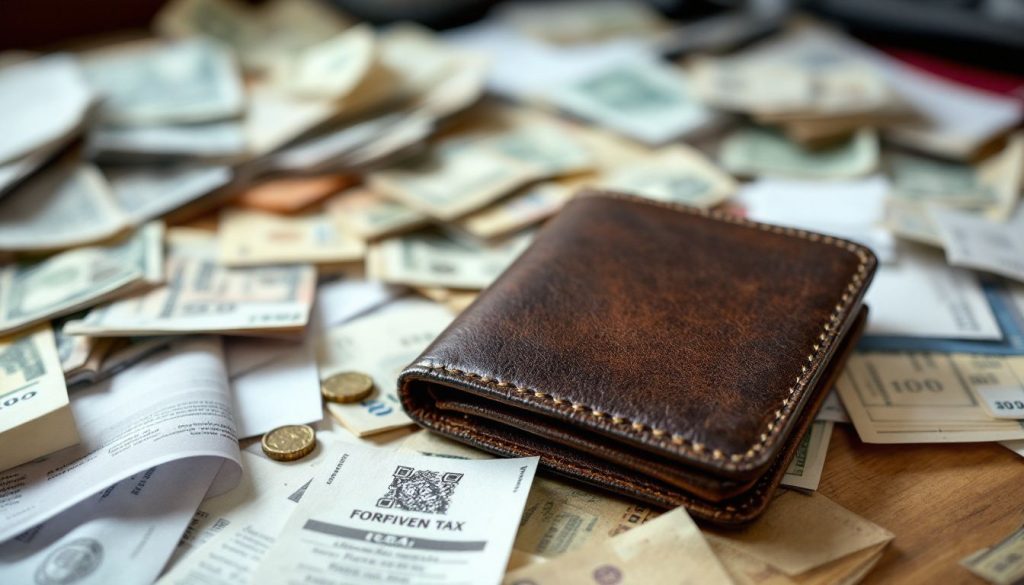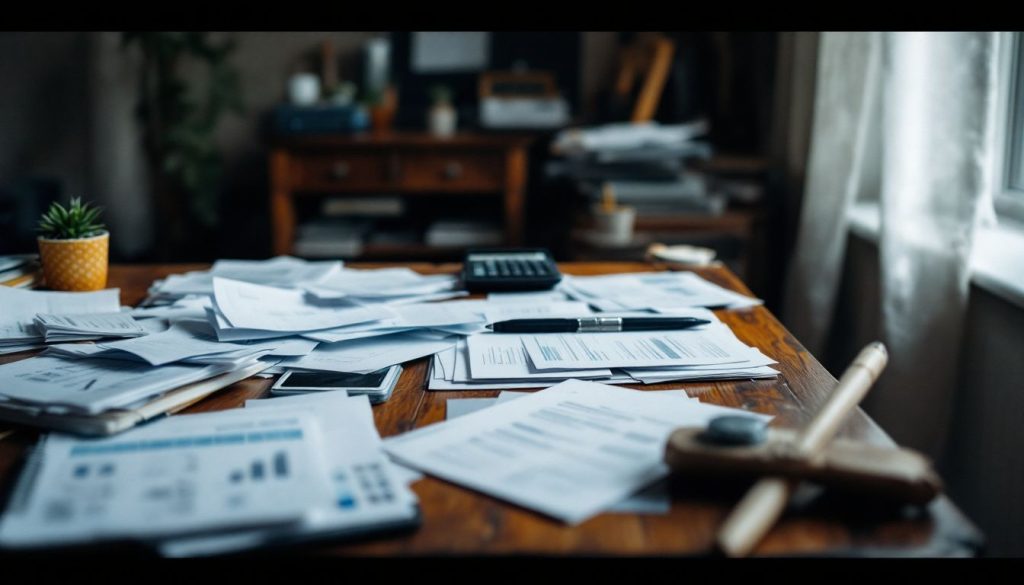Paying off tax debt can be tough. One helpful fact is that you can make payments over time with a plan. This article will show how to consolidate CRA arrears and set up a payment plan.
Keep reading to learn more.
Key Takeaways
- Contact the CRA quickly to talk about your tax debt and find a payment plan that fits your budget.
- You can use a pre-authorized debit (PAD) agreement to make automatic payments from your bank account.
- Taxpayer relief programs may reduce interest and penalties if you show financial hardship.
- Making partial payments lowers interest on what you owe. Do not mix these with regular payroll deductions.
- Consider options like debt consolidation loans or talking to a Licensed Insolvency Trustee if debt is too much.
How to Consolidate CRA Arrears
To consolidate CRA arrears, you need to know your options. This could involve negotiating payment terms or looking into taxpayer relief programs.
Understanding Your Options
You have options for dealing with CRA arrears. Start by contacting the Canada Revenue Agency (CRA) as soon as possible. They can help you find a payment arrangement that fits your needs.
You may be able to set up a payment plan that allows you to pay off your taxes over time in installments. This can reduce interest and penalties on what you owe.
Consider using a pre-authorized debit (PAD) agreement if paying right away isn’t an option. With this, you can schedule payments directly from your bank account. Keep in mind that CRA will not forgive tax debt except through a formal debt settlement made with a Licensed Insolvency Trustee.
Making timely payments helps lower overall debt.
Negotiating Payment Terms
Negotiate payment terms with the Canada Revenue Agency (CRA) to reduce your tax arrears. Start by contacting them promptly. Discuss what you can afford to pay in multiple installments over time.
CRA may let you set up a CRA installment plan that breaks your payments into smaller amounts.
You can also ask for leniency on interest and penalties. If approved, this will lessen your total debt burden. A pre-authorized debit (PAD) agreement helps you schedule automatic payments from your bank account.
This way, it’s easier to manage your cash flow and meet repayment obligations without missing deadlines.
Taxpayer Relief Programs
Taxpayer Relief Programs help Canadians who struggle to pay their taxes. These programs can reduce interest or penalties on unpaid debts. They allow for manageable payment plans with the Canada Revenue Agency (CRA).
To qualify, you need to show your financial hardship.
A CRA payment plan can let you pay off your tax debt over time in installments. While CRA does not forgive tax debts easily, these programs provide some relief options. Taking action sooner rather than later can help you find a way through your debt repayment challenges.
Making a Payment Plan
Making a payment plan helps you manage your CRA arrears. Start by creating a clear schedule for your payments and track all your income and expenses.
Setting Up a Schedule
Setting up a schedule is key for managing your CRA debt. Start by using a pre-authorized debit (PAD) agreement. This setup lets you make payments automatically from your bank account.
You can choose how much to pay and when to pay it.
Contact the CRA right away to discuss your payment options. They can help you find an amount that fits your budget. A payment plan allows you to pay off taxes in installments, which may also reduce interest and penalties on unpaid amounts.
Use this chance to take control of your debt repayment plan effectively.
Calculating Income and Expenses
Calculating your income and expenses is key to making a payment plan. Start by listing all sources of income. This includes your salary, any side jobs, and other earnings. Next, write down all your monthly expenses.
Include rent or mortgage payments, utilities, groceries, and transportation costs. Be honest with yourself about what you spend.
Once you have this information, compare your total income to total expenses. A good plan shows more income than expenses or helps you find ways to cut costs. Make sure to adjust for any unpleasant surprises in the future.
If needed, contact the CRA right away to discuss options for managing your tax debt better through a payment agreement or tax relief options.
Preparing for Payments
Prepare for payments by reviewing your income and expenses. This helps you know how much you can afford to pay. Contact the CRA to discuss your options. They can help you set a manageable amount in installments.
Using a pre-authorized debit (PAD) agreement is also helpful. It allows for automatic deductions from your account, making payments easier.
You can make partial payments to lower the interest on unpaid amounts too. Keep in mind that CRA will not combine your arrears payment with current payroll deductions or contributions.
It’s important to plan carefully before you start making payments towards your CRA debt relief strategy. Next, let’s look at other ways to manage CRA debt effectively.
Other Ways to Manage CRA Debt
4. Other Ways to Manage CRA Debt: You can pay in small amounts over time, apply for help with your tax debt, or take out a debt consolidation loan. Some may even consider personal bankruptcy as an option.
Explore these choices to find what works best for you and your situation.
Paying in Installments
Paying in installments is a smart way to manage your CRA arrears. You can set up a series of payments using a pre-authorized debit (PAD) agreement. This option allows you to pay off your tax debt over time.
Your interest and penalties may also be waived if you stick to the plan.
You should contact the CRA as soon as possible. They can help you discuss your payment options and find an amount that fits your budget. Making partial payments reduces the interest on unpaid amounts, making it easier for you to handle your debt.
Applying for Taxpayer Debt Relief
Taxpayer debt relief is an option for those who owe money to the Canada Revenue Agency (CRA). This can help reduce interest and manage your debts better. To qualify, you must contact the CRA right away.
They will discuss your situation with you and find a payment plan that fits your budget.
The CRA does not forgive tax debt outright unless through formal debt settlement made with a Licensed Insolvency Trustee. However, they may offer options to lower penalties or allow partial payments on unpaid amounts.
Be sure not to mix these payments with current remittances like payroll deductions. You can use a payment assistance program as well if you meet certain criteria.
Debt Consolidation Loans
Debt consolidation loans can help you manage CRA debt. These loans allow you to take a single loan to pay off multiple debts. You will have only one monthly payment, which may make it easier to handle.
Using a debt consolidation loan can also lower your interest rates. This means more money goes toward paying off the principal amount of your CRA arrears rather than just interest.
Always look for options that suit your financial needs before proceeding with this kind of loan.
Filing for Personal Bankruptcy
Filing for personal bankruptcy can be a way to deal with CRA debt. This option helps people who cannot pay their taxes or other debts. A Licensed Insolvency Trustee must handle the formal process for debt settlement.
CRA does not forgive tax debt without this step.
It is wise to know that filing will hurt your credit score. However, it may help you regain control of your finances in the long run. You can start fresh and work towards managing your debts better after bankruptcy.
Always seek advice before making this big decision, as there are many options available for government debt relief and managing ongoing payments effectively.
Tips for Managing Debt
Make a clear plan to pay off your debt. Stay focused on your goals and track your progress often.
Make a Plan
Making a plan helps you manage your CRA debt. Start by calculating your income and expenses. This will show how much you can pay each month. You can set up a schedule for these payments using a pre-authorized debit (PAD) agreement in your online CRA account.
This option allows you to pay off your taxes over time.
Settle on an amount that fits within your budget. The CRA may waive some interest and penalties if you stick to the plan. Make sure not to combine arrears payments with current payroll deductions when remitting them.
If paying taxes feels too hard, reach out for help right away; many options exist to ease this burden.
Consider Debt Consolidation
A payment plan helps you manage your debts. Consider debt consolidation to combine what you owe into one monthly payment. This can lower your interest rates and make it easier to pay off your CRA arrears.
You may qualify for a debt consolidation loan. Such loans can help reduce the total amount of interest you need to pay on unpaid taxes. Contact the CRA quickly to discuss how much you can afford each month and avoid wage garnishment.
You should also think about taxpayer relief programs if you’re struggling with payments.
Avoid Taking on More Debt
Avoiding more debt is crucial when managing your CRA arrears. Taking on extra loans can make your situation worse. Stick to a payment plan that you can handle. You can set up a pre-authorized debit (PAD) agreement to help manage payments easily.
Making partial payments to the CRA will lower the interest on what you owe. It’s smart to focus on paying off existing debts instead of adding new ones. Seek help if you’re unsure how to manage this debt load, as options are available for reducing interest and finding solutions.
Know Where to Get Help
Managing debt can feel overwhelming. Getting help is important. The Canada Revenue Agency (CRA) has options for people who can’t pay their taxes. You can contact them to discuss payment options that fit your budget.
Taxpayer relief programs may also help reduce interest on unpaid amounts. If you need more assistance, consider speaking with a Licensed Insolvency Trustee for formal debt settlement.
They can guide you through the process of managing CRA arrears and making a payment plan that works for you.
FAQs
1. What does it mean to consolidate CRA arrears and make a payment plan?
Consolidating CRA arrears means combining all your tax debts into one. Making a payment plan is arranging with the Canada Revenue Agency (CRA) to pay off this debt over time.
2. How can debt management help in dealing with CRA arrears?
Debt management can assist you in controlling your finances, avoiding wage garnishing, and planning how to pay back your consolidated CRA arrears.
3. Is there any chance for debt forgiveness when consolidating CRA arrears?
While the CRA usually expects full repayment of taxes owed, some situations might allow for partial or complete debt forgiveness. It’s best to consult with a financial advisor about this.
4. What happens if I don’t manage my consolidated CRA arrears properly?
If you fail to manage your consolidated debts well, the consequences could be severe including garnishing wages by the agency until they recover their money.









